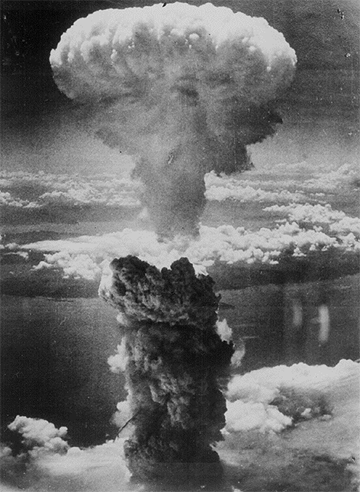 World
Politics:
World
Politics:
the era of Old Man and the
Sea
The late 40s and the early 50s can be said to have left fingerprints on Hemingway’s Old Man and the Sea. These were changing times for the world. World War II was finished seven years before Hemingway’s book, that would eventually achieve a Nobel Prize in Literature, was published in 1952. The lasting effects of the War were still hanging as the world continued to rebuild and move on. This is the era that painted the Cuban setting in the Old Man and the Sea.
Harry S. Truman assumed Presidency of the United States, from 1945 or 1952. It was during this Presidency that the Hiroshima Atom bomb exploded 580 meters above the ground on August 6th, 1945. The force of this bomb flattened virtually everything within a two-mile radius. This combined with the bombing of Nagasaki three days later killed 110,000 Japanese citizens, and five years later, others continued to die as a result of their injuries or radiation. The rejoicement of the Koreans over Japan’s capture was short-lived as the Korean War began in 1950, lasting until 1953. This war was one of the first episodes of the Cold War and involved many of the great personalities of that era, including Truman, MacArthur and Stalin.
Hemingway himself has been quoted to say the following:
“There isn’t any symbolism. The sea is the sea. The old man is
an old man. The boy is a boy and the fish is a fish. The sharks are sharks,
no better, no worse. All the symbolism people say is s**t. What goes beyond
is what you see beyond when you know.”
Many critics and readers have delved past this defense and continued to find symbolism beneath Ernest Hemingway’s words. The almost cynical ending of the book, as Santiago returns home with nothing but the skeleton of his prize dish, could be the effects that the worldwide trauma of war after war could cause on a person’s mind. In a sense, the shark predators that attack Santiago’s boat could be seen as symbolic of Nazi Germany, ruthlessly following demands of their own instincts.
Image: The Atomic Bomb exploding over Hiroshima on August 6th, 1945. Taken from HistoryCentral.com
Sources:
American Cultural
History 1950-1959
Korean War
– the Forgotten War
Hiroshima
Atom Bomb
Picture of the
Bomb
The Hiroshima and
Nagasaki Bombings Remembered
The History
Place
Home • Religion
in Old Man and the Sea • Fishing in the 50s
• World Politics
Life in Cuba • Baseball:
The Great DiMaggio • Characters in the
Story
About Ernest Hemingway • About
this Site